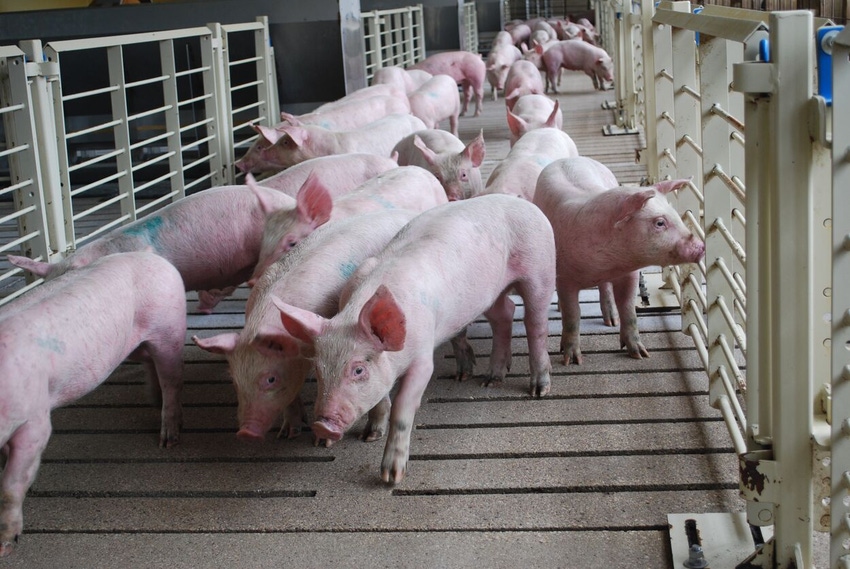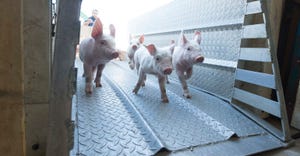Sustainability in the swine industry
Understanding the life cycle assessment of the pork supply chain.
April 5, 2022

The overarching goal of the swine industry is to provide high-quality protein to feed the world's growing population. Improvements in production efficiency are continually being made to create a better and more sustainable product.
Sustainability in the swine industry can be calculated using a Life Cycle Assessment. An LCA is a holistic approach to analyze the cumulative environmental impacts of the different phases of swine production. Swine production LCAs can inform producers and consumers how certain production practices impact the environment (Thoma et al., 2015).
The methodology of an LCA can be divided into four sections: goal and scope definition, inventory analysis, impact assessment and interpretation (Guinée et al., 2015). The goal and scope section of an LCA focuses on how the assessment can help the production system and what important parameters need to be included in the other sections. Inventory analysis outlines how materials and energy act within the production system and its environmental outcomes. Information collected from the inventory analysis is used for the impact assessment to determine how the development of the product or goods influences the system and, subsequently, the environment. Interpretation of the LCA ties everything together allowing producers and consumers to understand the environmental impacts of producing a product (Muralikrishna, 2017).
Publication of LCAs regarding livestock production is common in Europe but is more scarce in the United States. The European LCAs are not directly applicable to pork production in the United States due to inherent differences in swine industry management practices.
The University of Arkansas created LCAs, specific to the U.S. swine industry, focusing on carbon, land and water consumption estimates. The system boundary of the pork supply chain for the swine LCAs encompasses feed production, live animal production phases (sow farm, nursery, finisher), transportation, processing, packaging, distribution, retail and consumption/disposal (Thoma et al., 2011; Matlock et al., 2014; Thoma et al., 2015).
As a result, pounds of carbon dioxide, square feet of land and gallons of water are the functional units for a 4 ounce serving of pork prepared and consumed. These analyses are comprehensible for both producers and consumers, allowing for increased understanding of the pork supply chain's impact on the environment.
Carbon Life Cycle Assessment
The Carbon LCA focuses on the greenhouse gas emissions produced in the pork supply chain. Greenhouse gases are produced by both natural and man-made activities and contribute to heating the environment. Concern regarding these gases today is due to the rapid accumulation of greenhouse gases within the Earth's atmosphere.
To compare atmospheric effects of greenhouse gas emissions, the global warming potential metric was developed (Vallero, 2019). Carbon dioxide has a global warming potential of 1, representing the baseline greenhouse gas. Relative to carbon dioxide, the global warming potentials for methane is 25, and 298 for nitrous oxide (Understanding Global Warming Potentials, 2021). Methane has a greater global warming potential comparative to carbon dioxide, but a significantly shorter atmospheric lifetime (12-15 years) degrading into carbon dioxide or water (Doble and Kumar Kruthiventi, 2007).
All three of these gases, carbon dioxide, methane and nitrous oxide, can impact sustainability in the swine industry. The emission of greenhouse gases from each stage of swine production is estimated using specific equations. Pounds of methane and nitrous oxide are converted to their carbon dioxide equivalents using the global warming potential parameters mentioned above for ease of calculating and interpreting emission estimates.
Land Life Cycle Assessment
The transition from raising hogs outdoors to today's commercial production systems has impacted the amount of land used by the swine industry. With the implementation of specific housing norms for the various stages of production, the Land LCA has supplementary impacts other than just the square footage of the animal housing units. Factors such as farming land, packaging and processing plants, retail (grocery stores) and consumption are now included in estimating land LCA.
The functional unit for land analysis is square meters per year based on land occupation to produce a pork product. Crops have limitations due to the growing seasons, but cropland is calculated in this LCA as occupied for the entire year if designated for swine production. Approximately 15 million acres of land are used for swine housing or feed in the United States (Thoma et al., 2015).
Water Life Cycle Assessment
Water is an often overlooked nutrient, but it has important roles in swine production, from providing hydration to the pigs to crop irrigation. Water needs vary throughout the phases of swine production. Muhlbauer et al. (2010) reported the greatest need is during the finishing phase and the least during farrowing. Watering systems (i.e., nipple, cup, wet/dry feeder) are associated with different wastage rates, with the highest wastage contributed to nipple drinkers (Muhlbauer et al., 2010).
Outside of the barn, the greatest factor impacting the water footprint of swine production is linked to crop irrigation. Irrigation is essential during times of drought to produce an adequate crop yield for the year. Water use for the U.S. swine industry is estimated to be 525 billion gallons per year (Matlock et al., 2014).
Summary
The overall footprint estimated for a 4 oz serving of pork is 2.48 pounds of carbon dioxide, 9.75 square feet of land per year and 8.2 gallons of water (Thoma et al., 2011; Matlock et al., 2014; Thoma et al., 2015). Combining and evaluating all three LCAs is important in understanding the swine industry's overall impact on the environment.
Within the pork supply chain, swine diet had the highest effect on the environment across all LCAs. Swine diet accounted for 96% of land occupation (Thoma et al., 2015) and 83% to 93% of water usage (dependent on feed source) (Matlock et al., 2014). For the Carbon LCA, feed was included within the sow production and grow/finish phases, but it was indicated that diet was among the major environmental impacts of the pork supply chain (Thoma et al., 2011).
The grow-finish production phase had the highest overall environmental impact, contributing 52.5% to the carbon footprint, 68% of feed designation� and 75% of on-farm water footprint (Thoma et al., 2011; Matlock et al., 2014; Thoma et al., 2015). Understanding the factors that impact the environmental footprint of swine production can help producers prioritize production strategies to make positive strides in reducing the environmental footprint of pork production while continuing to improve production and farm profitability.
Key Points
Life Cycle Assessment can be utilized as a tool to help swine producers and consumers understand the environmental impacts of pork production.
The grow-finish phase in swine production has the highest environmental impact on all LCAs.
Feed contributed the most carbon dioxide produced, land occupied and water used for swine production in the pork supply chain.
References
Doble, M., and A. Kumar Kruthiventi. 2007. Alternate Energy Sources. In: Green Chemistry and Engineering. Elsevier Inc. p. 171–192.
Guinée, J., R. Heijungs, G. Huppes, A. Zamagni, P. Masoni, R. Buonamici, T. Ekvall, and T. Rydberg. 2015. Life Cycle Assessment: Past, Present, and Future. Environ. Sci. Technol. 11:29–42. doi:10.17654/JPHMTFeb2015_029_042.
Matlock, M., B. Greg Thoma, P. Eric Boles Mansoor Leh, H. Sandefur Rusty Bautista, and P. Rick Ulrich. 2014. A life cycle analysis of water use in U.S. pork production: Comprehensive Report. PorkCheckoff. 67.
Muhlbauer, R. V., L. B. Moody, R. T. Burns, J. Harmon, and K. Stalder. 2010. Water Consumption and Conservation Techniques Currently Available for Swine Production - NPB #09-128.
Muralikrishna, I. 2017. Life Cycle Assessment. In: Environmental Management: Science and Engineering for Industry. Elsevier Science & Technology. p. 57–75.
Thoma, G., M. Matlock, B. Putman, and J. Burek. 2015. A Cradle to Farm Gate Life Cycle Analysis of Land Use in US Pork Production. Compr. Rep. 1–73. doi:10.13140/RG.2.1.1057.1120.
Thoma, G., D. Nutter, R. Ulrich, M. Charles, J. Frank, and C. East. 2011. National Life Cycle Carbon Footprint Study for Production of US Swine. 1–75.
Understanding Global Warming Potentials. 2021. United States Environ. Prot. Agency. Available from: https://www.epa.gov/ghgemissions/understanding-global-warming-potentials
Vallero, D. A. 2019. Air pollution biogeochemistry. In: Air Pollution Calculations. Elsevier Inc. p. 175–206.
Source: Erika M. Johnson, Lance H. Baumgard and Jason W. Ross, who are solely responsible for the information provided, and wholly own the information. Informa Business Media and all its subsidiaries are not responsible for any of the content contained in this information asset.
You May Also Like



